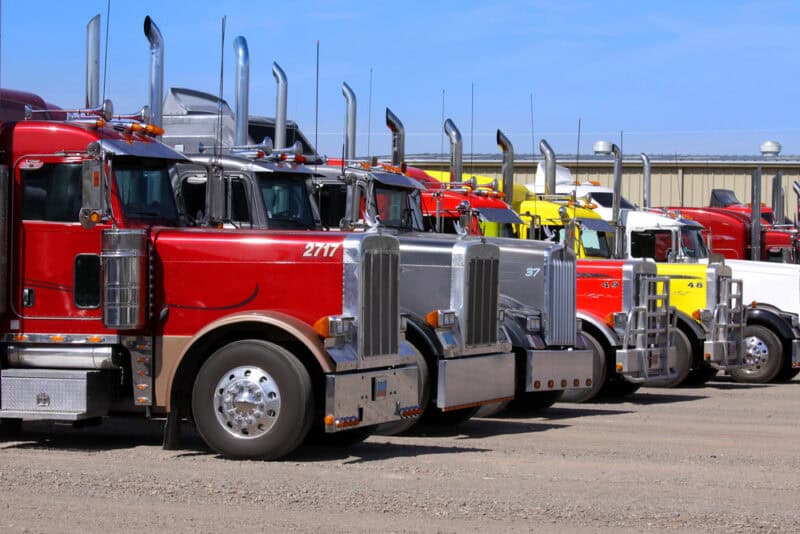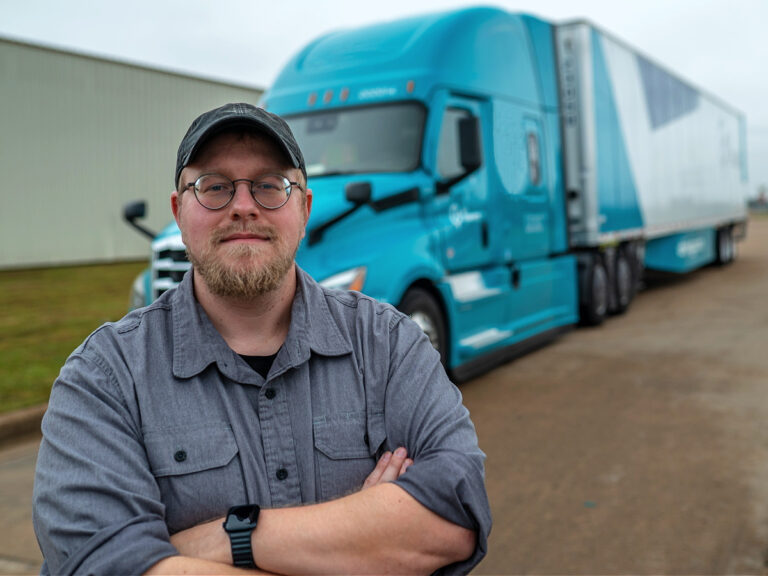How 2025 Trucking Regulation Changes Will Affect U.S. Truck Drivers
An overload of trucking regulations has become the norm for U.S. truck drivers.
In fact, it’s become a huge point of contention so much so that many truckers leave the industry, as they claim it’s over regulated.
I’m also of the mindset that this industry is over regulated to the point that it’s near impossible to be 100% compliant!
Nonetheless, it’s crucial for truck drivers and trucking company owners to keep up with the new regs in order to avoid the headaches involved with non-compliance.
The Federal Motor Carrier Safety Association (FMCSA) has rolled out some MORE regulations in hope of improving the safety of the driving public and truck drivers.
Here are the recent regulation changes you should know about that could affect you if you drive a truck in the U.S.
It should be noted that some of these changes will affect some drivers more than others, depending on whether you’re a company driver, owner operator or an independent.
Say Bye Bye to MC Numbers

If you’ve been in trucking for a while, you’ll know that trucking companies are identified with both a USDOT number and an MC number for their operating authority.
Starting January 1, 2026, this is will change.
The FMCSA is getting rid of the MC # numbering system.
Why?
The government wants to reduce the confusion of a system that has a lot of overlap of information.
Carriers will only have a USDOT # for identification.
Apparently, there’s been a lot of fraud and freight theft as it’s relatively easy to get an MC # online.
So the powers that be are acting on this (Now if they would only be as quick to the party on the SHORTAGE OF PARKING ISSUES!!)
For most company drivers, this won’t affect your day-to-day, but for owner-operators and fleets, it’s something to pay attention to.
Tougher Emissions Standards
The EPA is putting an even bigger squeeze on big truck engines with even stricter standards.
California has introduced more changes recently, which I am sure does not surprise you in the least. It’s what they do in California.
They are aiming to make drayage trucks with zero emissions within the next 10 years.
Hmmm… a tall order, but California doesn’t care. They just roll out the rules and expect the rest of the country to comply, should they wish to enter the state of CA in a truck!
How this will affect truck drivers: If you’re driving an older drayage truck, they say you must go to a CA seaport yearly, so you won’t be removed from their system.
Automated Braking Systems And AE Technology
The FMCSA recently brought forth a new plan for safety standards for brakes.
If this new standard is adopted, all trucks and vehicles with a gross weight of 10,000 lb + must have automatic emergency braking.
How this will affect truck drivers: If you happen to own a truck in this category, get ready to invest in this auto emergency braking system.
Written Tests For New Carriers
About 15 years ago, the FMCSA wanted new trucking companies to prove they have the knowledge and skills needed to run a trucking company. However, nothing much became of the program.
So the Department of Transportation has decided to crack down on the program, by checking into new applicants for their operating authority and test them in a written exam.
How this will affect truck drivers: This will only affect you if you’re a new carrier applying for your operating authority. If in fact, this whole thing becomes real, it will be necessary for you to write their exam and pass it. But, if you already have your authority and been in business, then it won’t apply to you.
Roadside Inspections Completed Electronically
Easier roadside inspections may soon be a thing. Wouldn’t that be nice?
A few attempts were made to get the rule implemented by past governments, as it would make truck inspections faster and easier.
This would mean that each and every commercial motor vehicle would have their own electronic ID.
How this will affect truck drivers: Won’t affect company drivers adversely, but may make inspection times shorter, which is definitely a win for the driver. However, for truck owners, there will initially be more red tape as you’ll need to apply for the electronic ID # and also have the electronic device installed in your trucks. Oh and at your cost by the way.
Unified Carrier Registration (UCR) Go Up
Here’s one that could really sting.
If you or your company participate in the Unified Carrier Registration Plan, the rates are increasing over 25%!
This could mean a cost increase of a few bucks to around $10K per company.
For example, if a company has 2 trucks, the 2025 Unified Carrier Registration fees will be raised to around $50. But for companies with over 1000 trucks, the fees could shoot up to nearly $50,0000!
Ouch.
How this will affect truck drivers: This change will only affect you if you’re a UCR member. Happily, if you’re a company driver, you need not give this one a second thought. Not your problem.
Oral Fluids Testing For Drugs And Alcohol
Trucking companies can choose how drivers are drug tested for the Drug and Alcohol testing programs. It can be ‘oral fluids’ or ‘urine samples’.
Drivers have zero input into how they are tested.
This change to allow the trucking company to choose the testing method, is to help reduce the cheating on drug tests.
How this will affect truck drivers: If you need to take a mandatory drug and alcohol test, your boss has the ultimate say as to whether to use your saliva or urine. So this will affect you as a driver. But if you’re clean, you’ve got nothing to worry about.
**Return-To-Duty Process For Drivers With Drug Or Alcohol Violations ** (Big Change: Take Note!)
The FMCSA has updated how truck drivers with drug or alcohol violations can return to duty.
State driver licensing agencies can no longer can’t issue, renew, upgrade, or transfer your CDL or CLP if FMCSA regulations don’t allow you to drive a commercial motor vehicle or perform because you have a drug and alcohol program violation.
- This also removes CLP or CDL privileges from your license
- This means your license is downgraded until you do everything you need to do to return to driving status duty.
- Your boss gives you a list of DOT-qualified substance abuse professionals you can choose from to get treatment or complete a program.
- The SAP must assess you and make education or treatment recommendations, if you’ve been dinged with a drug or alcohol violation.
- Then, the SAP must decide if you have successfully completed the education or treatment to their standards.
- If you qualify for the return-to-duty test, your employer must send you to take the test.
- If a truck driver is an owner-operator, the chosen designated consortium/ 3rd party administrator must send them to be retested. The driver can only go back to driving again when the Drug Clearinghouse status is posted as “not prohibited.”
- Your boss must then complete a follow-up testing plan with you for you to keep your “not prohibited” status.
How this will affect truck drivers: If you can’t drive trucks because of a drug or alcohol violation, you’ll need to be assessed by a professional, complete any recommended treatment, and be assessed again to start driving again. This is definitely affecting a large number of truck drivers.
And it’s certainly adding to the so-called truck driver shortage and the number of drivers who can cross borders into Canada.
No wait. That’s not a problem now so much due to the Tariff War between Canada and the U.S.
But Is It All In the Name of Safer Trucking?
Safety is what they ‘say’ changes in trucking are all about. That’s why all the rules and regulations.
2025 certainly has lots of changes in store for truck drivers who drive in the U.S.
And make no mistake, the trucking industry will continue to make more and more changes.
Ideally these changes are for the purpose of safety and greater efficiency in the industry.
However, time will tell if this is truly the outcome.
Critics of the industry bring to our attention that this overwhelming control and volume of regulations is continuing to discourage our truck drivers from staying in the industry and also failing to attract new blood to truck driving jobs.
All in the name of control.



